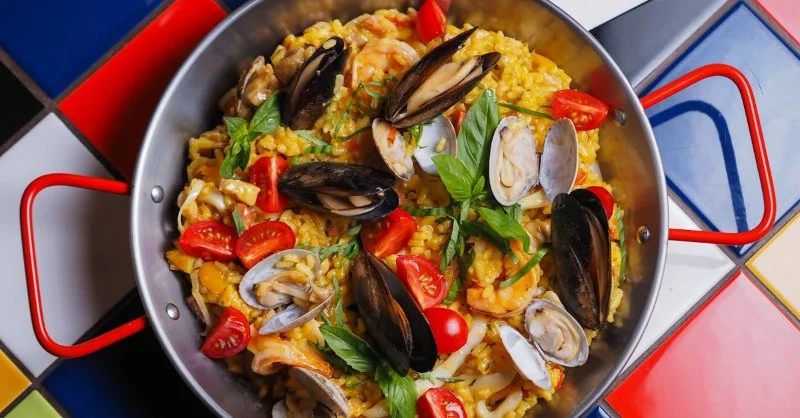
Exploring Spanish Culinary Traditions for Modern Home Cooking
- Introduction to Spanish Culinary Traditions
- Key Techniques in Spanish Cooking
- Essential Ingredients for Spanish Dishes
- Must-Try Spanish Recipes for Home Cooks
- Adding Modern Twists to Spanish Recipes
Spanish cuisine is a rich tapestry of regional flavors, techniques, and ingredients that have been passed down through generations. Whether you’ve enjoyed tapas in a bustling Madrid square or savored a hearty paella by the Mediterranean, there’s something universally appealing about the authenticity of Spanish cooking. For home cooks, embracing Spanish culinary traditions can add depth and variety to your cooking repertoire, while also allowing you to connect with centuries of culinary history. In this article, we’ll explore key aspects of Spanish cooking that you can incorporate into your own home kitchen, blending the old with the new to create dishes that are both delicious and modern.
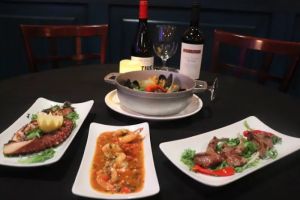
La Buena Vida Spanish Restaurant
MorichesSuffolk CountyNew York
714 Montauk Hwy, Moriches, NY 11955, USA
Key Techniques in Spanish Cooking
Spanish cooking is characterized by its simple yet effective techniques that highlight the natural flavors of ingredients. Here are a few fundamental methods you should know:
- Sautéing: In Spanish cuisine, sautéing is often used to create flavorful bases for stews and sauces. The technique involves cooking ingredients in olive oil at medium-high heat to achieve a crispy, golden texture while preserving moisture inside.
- Slow-cooking: Many traditional Spanish dishes, such as stews and braised meats, are cooked low and slow to develop rich, deep flavors. Dishes like cocido madrileño and fabada asturiana benefit from slow cooking, allowing flavors to meld together.
- Grilling (Asado): Grilling is a classic Spanish technique, especially in regions like Andalusia. Cooking meat, fish, and vegetables over an open flame imparts a smoky flavor that’s a hallmark of many Spanish dishes.
- Paella preparation: Originating from Valencia, the process of cooking paella involves creating a crisp, flavorful crust (known as socarrat) on the bottom of the rice by cooking it uncovered, allowing the rice to absorb the flavors of the broth and ingredients.
Essential Ingredients for Spanish Dishes
Spanish cuisine relies heavily on a few core ingredients that form the foundation of many classic dishes. Here are the essentials you should have on hand:
- Olive oil: Spanish olive oil is known for its robust flavor, and it’s used in almost every Spanish dish, from sautéing to drizzling over salads and soups.
- Saffron: The prized spice in paella, saffron is what gives many Spanish dishes their distinctive golden color and floral flavor.
- Paprika (Pimentón): Spanish paprika is a smoky, sweet spice that’s integral to dishes like chorizo and patatas bravas. It comes in several varieties, including sweet, bitter, and hot.
- Garlic: A key flavoring agent in Spanish cuisine, garlic is used in countless dishes, from ajillo (garlic shrimp) to stews and marinades.
- Seafood: Given Spain’s extensive coastline, seafood is central to many regional dishes. Shrimp, clams, squid, and fish are commonly used in recipes like paella and mariscos.
- Chorizo: Spanish chorizo is a smoky, spiced sausage made from pork and paprika, often used in stews, soups, and tapas.
Must-Try Spanish Recipes for Home Cooks
Now that you’re familiar with some of the essential techniques and ingredients, it’s time to explore some iconic Spanish recipes that are perfect for home cooks:
- Paella: A beloved dish from Valencia, paella combines rice, saffron, seafood, and/or meat in a savory broth. You can customize it with your favorite ingredients, but mastering the art of the perfect socarrat is key to a successful paella.
- Gazpacho: This refreshing, cold soup made with tomatoes, cucumbers, and peppers is perfect for summer and is one of the quintessential dishes from Andalusia.
- Patatas Bravas: Crispy fried potatoes topped with a spicy tomato sauce and aioli, patatas bravas are a popular tapas dish enjoyed all over Spain.
- Tortilla Española: Also known as Spanish omelet, this simple yet satisfying dish combines eggs, potatoes, and onions into a savory, thick omelet. It can be enjoyed warm or cold and is perfect for breakfast, lunch, or dinner.
- Churros with Chocolate: For dessert, churros—fried dough pastries dusted with sugar and cinnamon—are often paired with a rich, thick chocolate dipping sauce.
Adding Modern Twists to Spanish Recipes
While traditional Spanish dishes are timeless, many modern chefs are putting creative spins on these classics. You can add a personal touch to your cooking by experimenting with local ingredients or incorporating new cooking techniques. For example:
- Vegan Paella: Traditional paella is made with meat and seafood, but a plant-based version can incorporate vegetables like artichokes, peas, and bell peppers, using vegetable broth instead of seafood or chicken stock.
- Tapas with a Fusion Twist: Try mixing Spanish tapas with other global flavors, like adding sriracha aioli to patatas bravas or using avocado as a topping for tortilla española for a creamy contrast.
By embracing Spanish culinary traditions and blending them with modern techniques, you can create flavorful dishes that are both authentic and exciting. Whether you’re making a simple tortilla for breakfast or preparing a festive paella for dinner, Spanish cuisine offers something for every home cook to enjoy.
If you’re looking for high-quality ingredients or kitchen tools to elevate your Spanish cooking, be sure to check out Rubi Spanish Table for the best products and resources to enhance your culinary adventures.
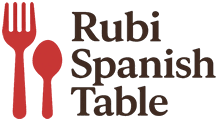
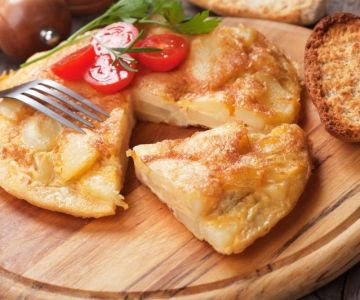
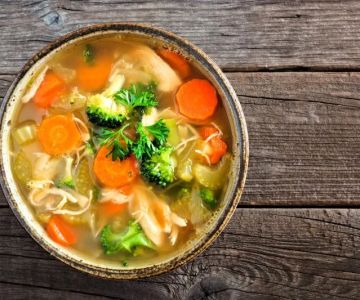
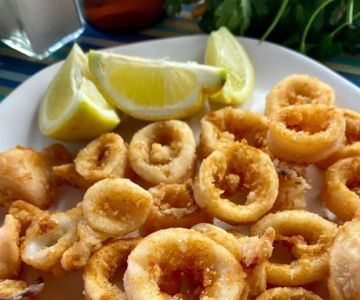
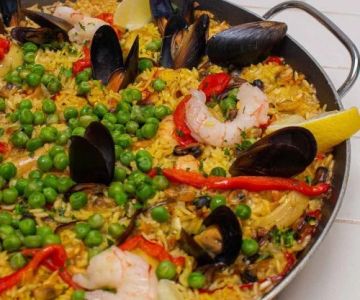


 Delia Restaurant Inc4.0 (38 reviews)
Delia Restaurant Inc4.0 (38 reviews) 3 Flags Grill & Restaurant4.0 (333 reviews)
3 Flags Grill & Restaurant4.0 (333 reviews) Mi pueblo Restaurant 24.0 (109 reviews)
Mi pueblo Restaurant 24.0 (109 reviews) PalBQ Smokehouse4.0 (6 reviews)
PalBQ Smokehouse4.0 (6 reviews) Tio Pepe4.0 (629 reviews)
Tio Pepe4.0 (629 reviews) Socarrat Paella Bar - Midtown East4.0 (1233 reviews)
Socarrat Paella Bar - Midtown East4.0 (1233 reviews)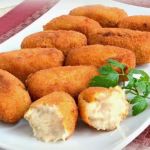 How to Make Spanish Croquetas de Pollo con Salsa Bechamel: Chicken Croquettes with Cream Sauce
How to Make Spanish Croquetas de Pollo con Salsa Bechamel: Chicken Croquettes with Cream Sauce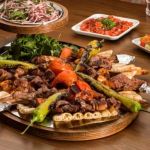 Best Spanish Restaurants in Charlotte for Mediterranean Cuisine
Best Spanish Restaurants in Charlotte for Mediterranean Cuisine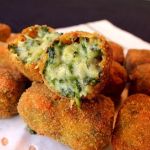 How to Make Spanish Croquetas de Espinacas y Queso: Spinach and Cheese Croquettes Recipe
How to Make Spanish Croquetas de Espinacas y Queso: Spinach and Cheese Croquettes Recipe The Best Spanish Food Markets in Salamanca for Fresh Meats and Cheeses
The Best Spanish Food Markets in Salamanca for Fresh Meats and Cheeses The Art of Making Spanish Jamón Ibérico at Home
The Art of Making Spanish Jamón Ibérico at Home How to Make Spanish Tarta de Almendra y Limón: A Delicious Almond and Lemon Cake Recipe
How to Make Spanish Tarta de Almendra y Limón: A Delicious Almond and Lemon Cake Recipe